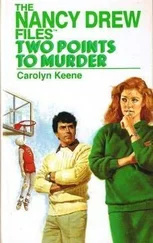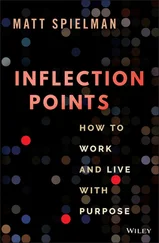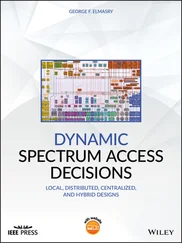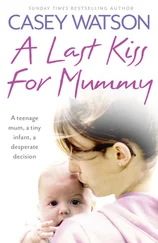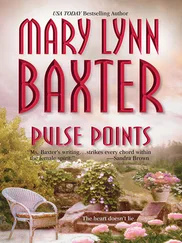In January 2008, I visited Horace Greeley Elementary School in Chicago to mark the sixth anniversary of No Child Left Behind. The school, named for the nineteenth-century abolitionist, was 70 percent Hispanic and 92 percent poor. It had outperformed most public schools in Chicago. Student proficiency in reading had risen from 51 percent in 2003 to 76 percent in 2007. Math proficiency had improved from 59 percent to 86 percent.

At Horace Greeley Elementary School. White House/Joyce Boghosian
It was uplifting to see a school full of low-income minority students thrive. A sixth-grader, Yesenia Adame, said she enjoyed taking tests. “Then your teachers can know what you need help on,” she explained. At the end of my visit, I told students, parents, and the press what I had long believed: No Child Left Behind is a piece of civil rights legislation.

I used to quip that I was a product of a faith-based program. By 1986, faith had changed my heart, and I had quit drinking. Ten years later, my eyes opened to the potential of faith-based programs to transform public policy.
In June 1996, two African American churches in the town of Greenville, Texas, were burned. Until 1965, a sign on the town’s main street had advertised “The Blackest Land, The Whitest People.” As governor, I feared we were witnessing a surge in old-time racism.
I traveled to Greenville to condemn the burnings. A mixed-race crowd of about four thousand people turned out in the football stadium. “From time to time, Texans boast that ours is a big state.” I said. “But as big as this state is, it has no room for cowardice and hatred and bigotry.” Then I gave the microphone to Tony Evans, a dynamic African American pastor from Oak Cliff Bible Fellowship in Dallas. He told a story about a house with a crack in the wall. The owner hired a plasterer to cover the crack. A week later, the crack reappeared. So he hired another plasterer. A week later, the crack was back again. Finally the homeowner called an old painter, who took one look and said, “Son, first fix the foundation and then you can fix the crack in the wall.”
The crowd nodded and clapped. Then Tony turned to me. “Governor, I have something to say to you,” he said.
Uh-oh , I thought. Where is this headed?
“We need to fix the foundations,” he said, “and your old government programs aren’t doing the job.” He said he had a better alternative. It was the most effective welfare system in the world. It had buildings on many street corners, a list of willing workers, and regular meetings to study the perfect manual for saving lives.
He was talking about houses of worship. And he was right. Faith-based programs had the potential to change lives in ways secular ones never could. “Government can hand out money,” I said, “but it cannot put hope in a person’s heart or a sense of purpose in a person’s life.”
I looked for ways for Texas to partner with faith-based organizations. I met with Chuck Colson, Richard Nixon’s White House counsel, who had spent time in a federal penitentiary and found redemption. Chuck had founded an organization devoted to spreading the Gospel behind bars. We agreed to start a faith-based program in one wing of a Texas prison. Chuck’s program, the InnerChange Freedom Initiative, would provide instructors for Bible study and a life lessons course. The program would be optional and open to prisoners near the end of their sentences. Each inmate who participated would be connected with a mentor and welcomed into a church congregation upon release.
In October 1997, I visited the Jester II prison near Sugar Land, Texas, where several dozen inmates had enrolled in InnerChange. At the end of the tour, a group of men in white jumpsuits filed into the courtyard. They formed a semicircle and struck up “Amazing Grace.” After a few stanzas, I joined the chorus.
The next morning, Karen Hughes brought me the Houston Chronicle . There I was on the front page, shoulder to shoulder with the prison choir. The story noted that the man next to me, George Mason, had pled guilty to killing a woman twelve years earlier. That day in the prison yard, he did not seem like a murderer. He had a gentle manner and a kind smile. No question he had become a spirit-filled man.

When I ran for president, I decided to make a nationwide faith-based initiative a central part of my campaign. In my first major policy speech, delivered in Indianapolis, I said, “In every instance where my administration sees a responsibility to help people, we will look first to faith-based organizations, to charities, and to community groups.”
Nine days after my inauguration, I issued executive orders creating an Office of Faith-Based and Community Initiatives in the White House and in five Cabinet departments. The offices changed regulations and broke down barriers that had prevented faith-based charities from accessing the federal grant-making process. To emphasize the initiative’s nonpartisan nature, I appointed Democrats to serve as the first two directors. One was John Dilulio, an innovative professor from the University of Pennsylvania. The other was Jim Towey, a thoroughly decent man who had led Florida’s social services department and served as Mother Teresa’s lawyer. I used to tell Towey that we sure have a litigious society if Mother Teresa needed a lawyer.
Some said the faith-based initiative blurred the line between church and state. I took that concern seriously. Government should never impose religion. Every citizen has the right to worship as he or she wishes, or not to worship at all. I was always wary of people who used faith as a political weapon, suggesting they were more righteous than their opponents. My favorite Bible verse for politicians is Matthew 7:3—“Why do you see the speck that is in your brother’s eye, but do not notice the log that is in your own eye?”
At the same time, government need not fear religion. If social service programs run by people of faith did not proselytize or discriminate against people receiving services, I thought they deserved a chance to compete for taxpayer dollars. The government should ask which organization would deliver the best results, not whether they had a cross, a crescent, or a Star of David on their wall.
The initiative opened up roughly $20 billion a year in federal funding to competition from faith-based groups. Many of these organizations had no experience interfacing with government, so we held forty conferences and more than four hundred grant-writing seminars to help them apply for funding. Ultimately, more than five thousand faith-based and community organizations, mostly small grassroots charities, received federal grants.
In January 2008, I visited the Jericho Program of East Baltimore. Operated by Episcopal Community Services of Maryland and funded by a grant from the Department of Labor, the program provided mentoring, counseling, and job training services to recently released adult male convicts. The nine men from Jericho were quiet when I walked into the room. I detected a fair amount of skepticism. “I drank too much at one point in my life,” I said to break the ice, “and I understand how a changed heart can help you deal with addiction.”
The men opened up and told their stories. One had been convicted of selling drugs, another of cocaine possession, another of theft. Many had been in and out of prison several times and had abandoned their families. Thanks to the services they received at Jericho, they had begun to find purpose in their lives. One man emotionally explained how thrilled he was to have reunited with his three daughters. “Six months ago, I was broken down,” he said. “Now I am shaking hands with the president.” Another told me proudly that he had received two job offers. “Drugs have always been a problem in my life, up until now,” he said. “Thanks to Jericho,” he said, “I got my groove.”
Читать дальше






